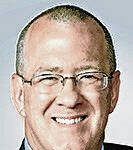THERE are a lot of memorials in Washington, D.C. They’re dedicated to individuals and events. Most of them are situated near the National Mall and are within a long walk of each other.
It’s possible within the space of a day to stroll among the monuments honoring Abraham Lincoln, Thomas Jefferson, Martin Luther King Jr. and Franklin Delano Roosevelt.
In that same day, one can also experience the World War II, Korean and Vietnam memorials and reflect on those who fought and gave their lives in those wars.
There’s another memorial that is not among those near the National Mall. It’s on a downtown street and is surrounded by office and apartment buildings. I’ve thought about it a lot during the past several days, in part a reaction to what happened in Dallas earlier this month when five police officers were mercilessly gunned down by a crazed man.
[sc:text-divider text-divider-title=”Story continues below gallery” ]
The Dallas incident was a tragic capstone to a troubling week. It followed the seemingly inexplicable shootings of two black men by white police officers in Louisiana and Minnesota. Unfortunately after the Dallas incident, the fatal shooting of three police officers in Baton Rouge added to the run of tragedy.
My thoughts were about the National Law Enforcement Memorial on E Street in Washington. Its purpose is to honor the more than 20,000 law enforcement officers who have been killed in the line of duty in a time span of more than two centuries.
The 20,000 number is changing. It increases every year. Sometime later this year the names of the five Dallas officers will be etched in the memorial’s stone.
I saw the memorial for the first time last month on a vacation trip with my son and grandson. It was a personal visit of sorts. My son, who served as tour guide, is an Indiana state trooper.
Unlike the Vietnam Memorial that follows a long path alongside a granite wall inscribed with the names of those killed in that war, the Law Enforcement Memorial is a series of curved walkways, broken up by stone walls on which are inscribed the names of the fallen officers.
Like its counterpart for the Vietnam War, the Law Enforcement Memorial can be mind-numbing. Name after name goes past with each step along the pathways. Taken individually, most of the names have little recognition. Each state is represented, some hundreds of times.
I was unfamiliar with almost all of the names. They died in different places, different times. Tragic though their deaths might have been at the time, their presences have grown murkier with the passage of time.
All that said, I knew of one name to look for among the more than 20,000 listed: Earl Brown.
I didn’t know Earl Brown. When he was killed in 1955, I was a teenager living in another state. Sixty years after his death, there are few personal vestiges of him in Bartholomew County. His widow, Dorothy, lived out her days in Columbus until her death in 2002. His two sons had left the area several years earlier.
But Earl occupies a special place in Bartholomew County history. He is the county’s only law enforcement officer to be killed in the line of duty.
His is a familiar name for past and present law enforcement officers in the county. It’s the name of the local Fraternal Order of Police lodge. It’s also on a stretch of Jonesville Road south of Columbus. Somewhere within that section of road his life was taken away from him on Aug. 31, 1955.
Earl might have remained only a statistic in my mind had I not interviewed Bill Weddle in the spring of 1994. It was occasioned by a community observance honoring police officers from around the country who had been killed while doing their job.
Earl became and remains personal to me after that conversation. The two men had been friends for a number of years, working together, for instance, on the construction of a police pistol range.
Early in the morning of Aug. 31, Bill, a member of the Columbus Police Department, was approached by Earl, a state trooper, with a request that he serve as his backup on an assignment to investigate a report of an armed man walking across a farmer’s field.
The two officers caught sight of the man walking alongside Jonesville Road near the Bartholomew-Jackson county line. Approaching him, they asked what he was doing, and the man, holding the shotgun to his shoulder, replied that he was hunting.
The time of day made the answer suspicious. Earl asked the man if he had anything else on him other than the shotgun. The man answered by pulling a revolver from his pocket and firing two shots into the state trooper. Everything after that was a blur to Bill.
“I remember the sound of that last shot and a bright orange flash,” he recalled in that interview. “I don’t remember pulling my gun or pulling the trigger, just that sound of a gunshot and that bright, orange flame.”
Bill described what followed as the longest five seconds of his life. Actually, what next took place saved his life.
After shooting Earl, the man turned his gun on Bill. That was when a third shot was fired, not by the assailant but by Earl. As he fell to the ground he pulled his revolver and got off one shot at his killer. The shot hit the man’s pistol, causing it to jam. At the same time Bill fired three shots of his own, each hitting the target and one shattering his spine.
The man survived but would be paralyzed the rest of his life. At his trial he was declared insane and sentenced to life in a mental institution. He died seven years after he killed Earl. That night stayed with Bill until his death in 1995.
I’m pretty sure that Earl did not envision his own death when he was called by dispatchers that August morning in 1955. I’m pretty sure that none of those 20,000-plus officers listed on the Washington memorial thought they would die on the day that they did.
There have been so many over the years that it’s difficult to avoid a certain resignation to the sad reality of the world in which we live. It is understandable when we read that the hearts of the people of Dallas are broken.
After all, I imagine the hearts of the people of Bartholomew County were broken that August day in 1955.
Harry McCawley is the former associate editor of The Republic. He can be reached at [email protected].



